Characteristics of Coffee from Eight Major Producing Areas in Guatemala

Photography / compilation: Huang Wei, all rights reserved
Guatemala is a famous producer of high-quality Arabica coffee in Central America. Coffee from five volcanic and three non-volcanic producing areas is very unique and enjoys a high reputation in the international market.
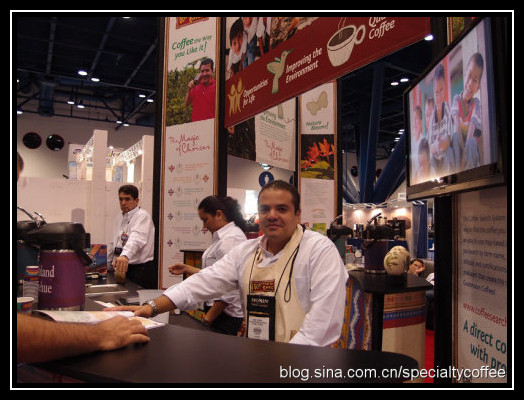
Mr. EduardoAmbrocio of the Guatemalan Coffee Company introduced Guatemalan coffee to the audience at the SCAA Houston show in April 2010.
Thanks to Ambrocio for giving samples of coffee from eight major producing areas in Guatemala.
1. AcatenangoValley ®:
The AcatenangoValley Valley, which is 2000 meters (6500 feet) above sea level, is shaded and ecologically unique, and the nearby Fuego volcano continues to erupt, making its coarse, sandy soil rich in a variety of minerals. Temperate sea breezes from the Pacific and a seasonal climate allow coffee in this region to be dried by sunlight and processed according to traditional family methods that have been accumulated over the years.


AcatenangoValley ®cupprofile for coffee cups in the Alcatrago Valley:
The acidity is obvious, the dry and wet fragrance is remarkable and pleasant, the alcohol thickness is good, and the aftertaste is clear and long.
[note] Frag/Aroma: aroma / aroma Flavor: flavor Acidity: acidity Balance: equilibrium
Body: alcohol thickness Aftertaste: aftertaste (aftertaste) Overall: overall (impression)
two。 Antigua coffee (AntiguaCoffee ®):
Rich volcanic soil, low humidity, plenty of sunshine and cool nights are the climatic characteristics of Antigua coffee producing areas. The valley is surrounded by three volcanoes: Agua, Fuego and Acatenango. Tierra del Fuego volcano is one of the three most active volcanoes in Guatemala, and the ash from frequent eruptions makes the soil of Antigua rich in minerals. The volcanic pumice in the soil can maintain humidity and help overcome the lack of rainfall in Antigua. In addition, the tree shade in this area is particularly dense, which can withstand occasional frosts and protect coffee plants from frosts.


AntiguaCoffee ®cupprofile (Antigua coffee cup)
Rich wet fragrance, good balance, high sweetness, elegant taste.
3. Traditional Attilan (TraditionalAtitl á n ®)
Atitlan is one of the five largest volcanic coffee producing areas in Guatemala, and its soil organic matter is the most abundant among the five volcanic coffee producing areas. 90% of the traditional Atilan coffee is grown on the violent volcanic slopes of Lake Attila, where the daily breeze stirs the lake, which is an important factor affecting the microclimate of the region. The area has accumulated excellent planting and processing techniques for a long time.

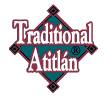
Traditional Attilan coffee cup test feature (TraditionalAtitl á n ®cupprofile):
The aroma is refreshing, the acidity is bright and the mellow thickness is full.
4. Rainforest Coban (RainforestCoban á n ®)
Koban is cloudy, rainy and cool all the year round. The vast majority of Koban coffee in the rainforest is grown in the obviously undulating and foggy mountains of the region and is deeply influenced by limestone and clay in the Atlantic basin. Koban has two seasons: the rainy season and the rainy season.

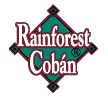
Measurement characteristics of Coban Cup in Rainforest (RainforestCb á n ®cupprofile)
Obvious fresh fruit flavor, balanced mellow thickness, pleasant aroma.
5. FraijanesPlateau ®:
The area is of volcanic soil, with high altitude, sufficient rainfall and great humidity variation. Ash from Pacaya, Guatemala's most active volcano, provides important minerals for the soil in the region. There is plenty of sunshine in the dry season, and although the clouds and dew are heavy in the morning, they dissipate quickly. As a result, 100% of the coffee in the area is processed in the full sun.


FraijanesPlateau ®cupprofile of coffee cups in Waiqiangsi Plateau
The acidity is bright and consistent, the aroma is full, and the mellow thickness is delicate.
6. HighlandHuehue ®:
Of the three major non-volcanic coffee producing areas in Guatemala, the Mini Tenango Highlands has the driest climate and the highest elevation. The dry and hot wind from Mexico's Tehuantepec plateau protects the region's coffee from frost and can be grown to 2000 meters (6500 feet). Because of its remote location, all coffee farmers have to process their own coffee, but fortunately there are so many streams in the area that small processing plants can be set up almost anywhere.


The HighlandHuehue ®cupprofile of Mini Tenanguo Highland Coffee Cup:
High acidity, pleasant, mellow thickness, with wine aftertaste.
7. New Oriental (NewOriente ®):
Coffee in this area has been grown entirely by small farmers since the 1950s, and now every farmer in the mountains is a coffee production unit. This area, once the most remote and poorest part of Guatemala, is now alive and well. Rainy, cloudy, New Oriental ancient times is a volcanic area, soil volcanic metamorphic rock evolved, rich in minerals, balanced nutrition, different from other volcanic coffee producing areas.


New Oriental coffee cup test features (NewOriente ®cupprofile):
The palate is well-balanced, mellow and full-bodied, with chocolate flavor.
8. Mount San Marco VolcanicSanMarcos ®:
San Marco has the hottest climate of the eight largest coffee producing regions in Guatemala, with a maximum rainfall of 200inches (5000 mm). The rainy season is earlier than in other areas, and coffee trees bloom earlier. Like other remote areas of Guatemala, volcanic San Marco coffee is grown and processed by small farmers. Due to frequent rainfall in the rainy season, most coffees are pre-dried in the sun and then dried in a Guardiola dryer.

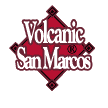
VolcanicSanMarcos ®cupprofile of the volcano San Marco coffee cup
There are subtle floral aromas in the aroma and taste, obvious acidity and good mellow thickness.
Important Notice :
前街咖啡 FrontStreet Coffee has moved to new addredd:
FrontStreet Coffee Address: 315,Donghua East Road,GuangZhou
Tel:020 38364473
- Prev
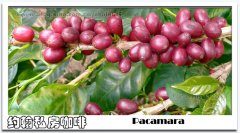
Coffee variety Pacamara Pacamara
Friends who are familiar with coffee may think of El Salvador El Salvador when they hear the Pacamara variety of Pacamara. It seems that Pacamara was born with El Salvador. There is no conclusive evidence that Pacamara is a graft product of two varieties, Pacas and Maragogype, but most people believe that this variety originated in El Salvador. Pacamara pa
- Next

Infinite worlds in coffee beans
In the small space of a coffee bean, there is an infinite world hidden. When the coffee beans were planted thousands of years ago, Chen Sheng and Wu Guang rebelled and shouted: "King will have a seed?" We have long been accustomed to the idea that everyone is equal, of course, it sounds very pleasant, but if this sentence is placed on coffee beans, it is estimated that beans will jump out to express opposition: I
Related
- Guji coffee producing area of Guji, Ethiopia: Humbela, Shakiso, Wulaga
- What is the most expensive variety of Qiloso in BOP multi-variety group?
- How to store the coffee beans bought home?
- Why are Yemeni coffee beans so rare now?
- Ethiopian Sidamo all Red Fruit Sun Sun Santa Vini Coffee beans
- SOE is mostly sour? What does it mean? Is it a single bean? what's the difference between it and Italian blending?
- Is Italian coffee beans suitable for making hand-brewed coffee?
- How to choose coffee beans when making cold coffee? What kind of coffee beans are suitable for making cold coffee?
- Just entered the pit to make coffee, what kind of coffee beans should be chosen?
- Can only Japan buy real Blue Mountain Coffee? What are authentic Jamaican Blue Mountain coffee beans?

